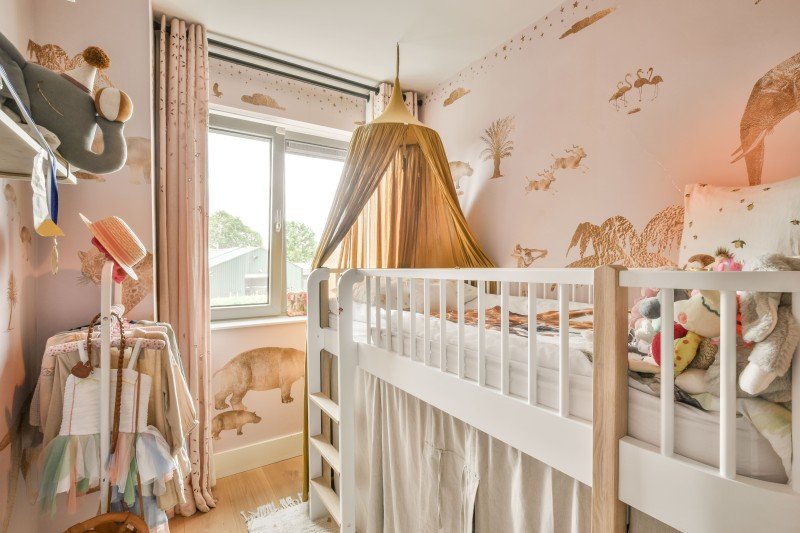20 Things Only The Most Devoted Kids Bunk Bed Fans Know
The Ultimate Guide to Kids Bunk Beds: Maximizing Space and Fun
With the rise of vertical living and smaller sized areas, the appeal of bunk beds has skyrocketed among households. Bunk beds not just use a useful sleeping option, especially in shared rooms, but they also bring a component of fun into a child's life. This extensive guide dives into the functions, benefits, and considerations of kids' bunk beds, making it much easier for moms and dads to choose the right bed for their little ones.
Features of Kids Bunk Beds
Bunk beds are flexible furniture pieces that serve more than a single function. Here are some crucial functions to consider:
Feature
Description
Material
Bunk beds can be built from wood, metal, or a combination of both, providing varying levels of durability and design options.
Security Features
Many bunk beds come geared up with guardrails, safe and secure ladders, and topped assistances for security, especially essential for kids.
Design Variety
Options range from traditional designs to modern styles, ensuring a match for any room décor.
Space-Efficiency
Bunk beds utilize vertical space, making them ideal for smaller sized spaces.
Convertible Options
Some models can be transformed into two separate beds, offering flexibility as children grow.
Storage Solutions
Some bunk beds feature built-in storage drawers or racks, assisting to keep the space organized.
Advantages of Kids Bunk Beds
Investing in a bunk bed comes with several benefits:
- Space Saving: Bunk beds make the most of flooring space, enabling more play location or storage services.
- Fun Factor: With a bunk bed, kids belong that cultivates creativity and friendship throughout sleepovers or playdates.
- Affordable: Instead of acquiring two different beds, a bunk bed can accommodate two kids at the same time, saving money in the long run.
- Versatility: Many bunk beds can be disassembled or converted into twin beds, making them a long-term financial investment as children's requirements change.
- Social Interaction: Bunk beds encourage household bonding and relationships, providing an inviting space for kids to share stories and laughter.
Factors to consider When Choosing a Kids Bunk Bed
When choosing the ideal bunk bed for a kid, moms and dads must consider numerous factors:
- Safety Standards: Ensure that the bunk bed complies with safety guidelines and comes with necessary security features.
- Age Appropriateness: Different models cater to different age. For instance, conventional bunk beds might not be ideal for more youthful children.
- Room Dimensions: Measure the bed room to make sure the bunk bed fits properly, permitting space to move comfortably.
- Weight Capacity: Consider the weight load of each bed and guarantee it accommodates the kid's weight conveniently.
- Design Preferences: Letting kids participate in the selection process can assist them feel more excited about their brand-new bed.
Kinds Of Kids Bunk Beds
Bunk beds can be found in different styles and setups to suit numerous needs:
Type
Description
Standard Bunk Bed
A classic style with one bed stacked on top of another, typically using a ladder to access the leading bunk.
L-Shaped Bunk Bed
Functions two bunk beds connected in an L-shape, frequently more roomy and suitable for kids sharing a space but requiring a bit more space.
Triple Bunk Bed
Comprises 3 stacked beds, ideal for optimizing sleeping plans in really limited areas.
Loft Bed
A raised bed with space underneath that can serve as a backyard, research study corner, or extra storage.
Futon Bunk Bed
Integrates a bunk bed on the top with a futon or couch below, making it great for sleepovers and maximizing space usage.
Convertible Bunk Bed
Can be separated into two individual beds, using flexibility as kids's needs change.
Taking Care Of Kids Bunk Beds
Preserving bunk beds is essential for ensuring durability and security. Here are some easy care practices:
- Regular Inspections: Check the bed frequently for loose screws and tightened up bolts to ensure stability.
- Cleanliness: Keep bed linen clean and fresh, turning mattresses for even wear.
- Guardrails: Ensure guardrails are secure and in place, specifically if children tend to move a lot in their sleep.
- Air Circulation: Ensure the bed has enough air flow, preventing moisture accumulation that can cause mold or mildew.
FAQs About Kids Bunk Beds
Q1: At what age can a kid securely use a bunk bed?
A1: Generally, children aged 6 and older are thought about safe to use the upper bunk due to the height and stability factors included.
Q2: Can I place a bunk bed near a window?
A2: It is advisable to avoid putting a bunk bed near windows to minimize the risk of falling or injuries.
Q3: Are bunk beds safe for more youthful children?
A3: While some modern bunk beds come with security features accommodating more youthful kids, it is usually recommended to wait till they are older, typically over six years.
Q4: What is the typical weight limitation for leading bunks?
A4: Weight limits differ by model but usually vary from 150 to 250 pounds. Always describe the manufacturer's specifications.
Q5: How frequently should I check the bunk bed's safety functions?
A5: It is recommended to carry out a safety check every couple of months or whenever you discover any signs of wear.
Kids' bunk beds serve as a tactical option for households wanting to optimize space while supplying a fun and engaging sleeping environment for their children. With a variety of choices readily available— from basic designs to loft beds— moms and dads have the liberty to select something that fulfills their family's particular requirements. By thinking about Bunk Bed For Kids as safety, space suitability, and their children's preferences, parents can make an informed option, making sure that each child is delighted about bedtime while benefiting from an efficient space.
